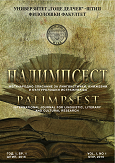AMERICAN VS. BRITISH ENGLISH: A STUDY OF GRAMMATICAL, VOCABULARY, AND SPELLING DIFFERENCES
DOI:
https://doi.org/10.46763/PALIM2491871rAbstract
Learners frequently encounter challenges distinguishing between American and British English due to subtle yet significant linguistic differences. Although both varieties are mutually intelligible, adopting American or British English becomes increasingly relevant as learners advance. This paper systematically analyses the distinctions between these varieties, focusing on grammar, vocabulary, and spelling, and illustrates these aspects through examples, particularly those that highlight unique British expressions. The study explores how consistency in using a single variety can enhance clarity, especially for language learners, and discusses implications for both native speakers and English learners. Additionally, this research examines the historical evolution of American and British English, tracing their development and divergences. Through a comprehensive comparison, this study offers insights into the linguistic, cultural, and practical considerations surrounding American and British English, contributing valuable guidance for educators and learners.
Keywords: American English, British English, grammar, vocabulary, spelling, differences.


